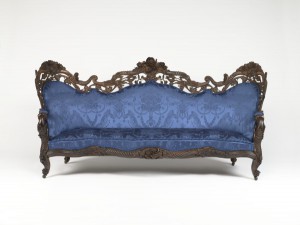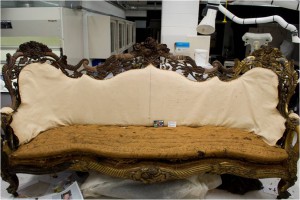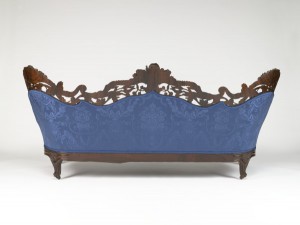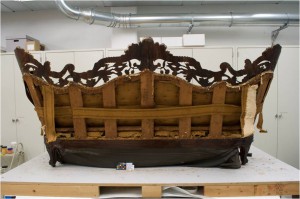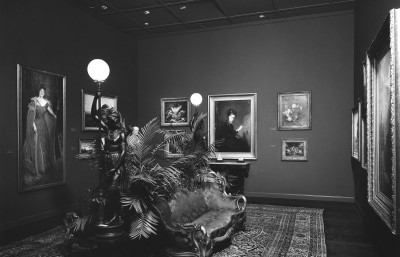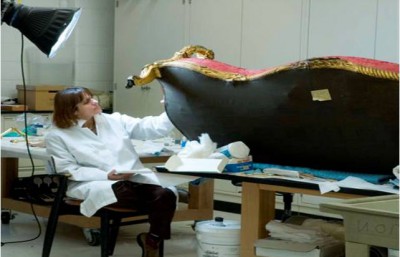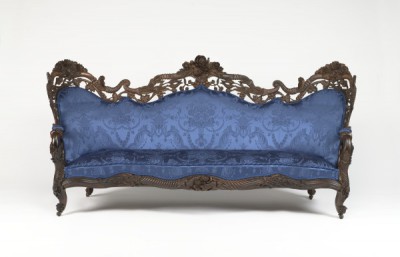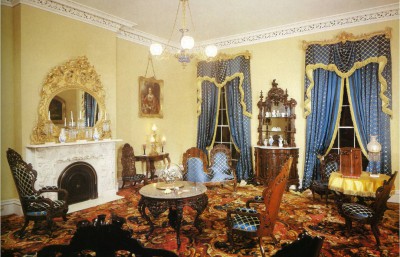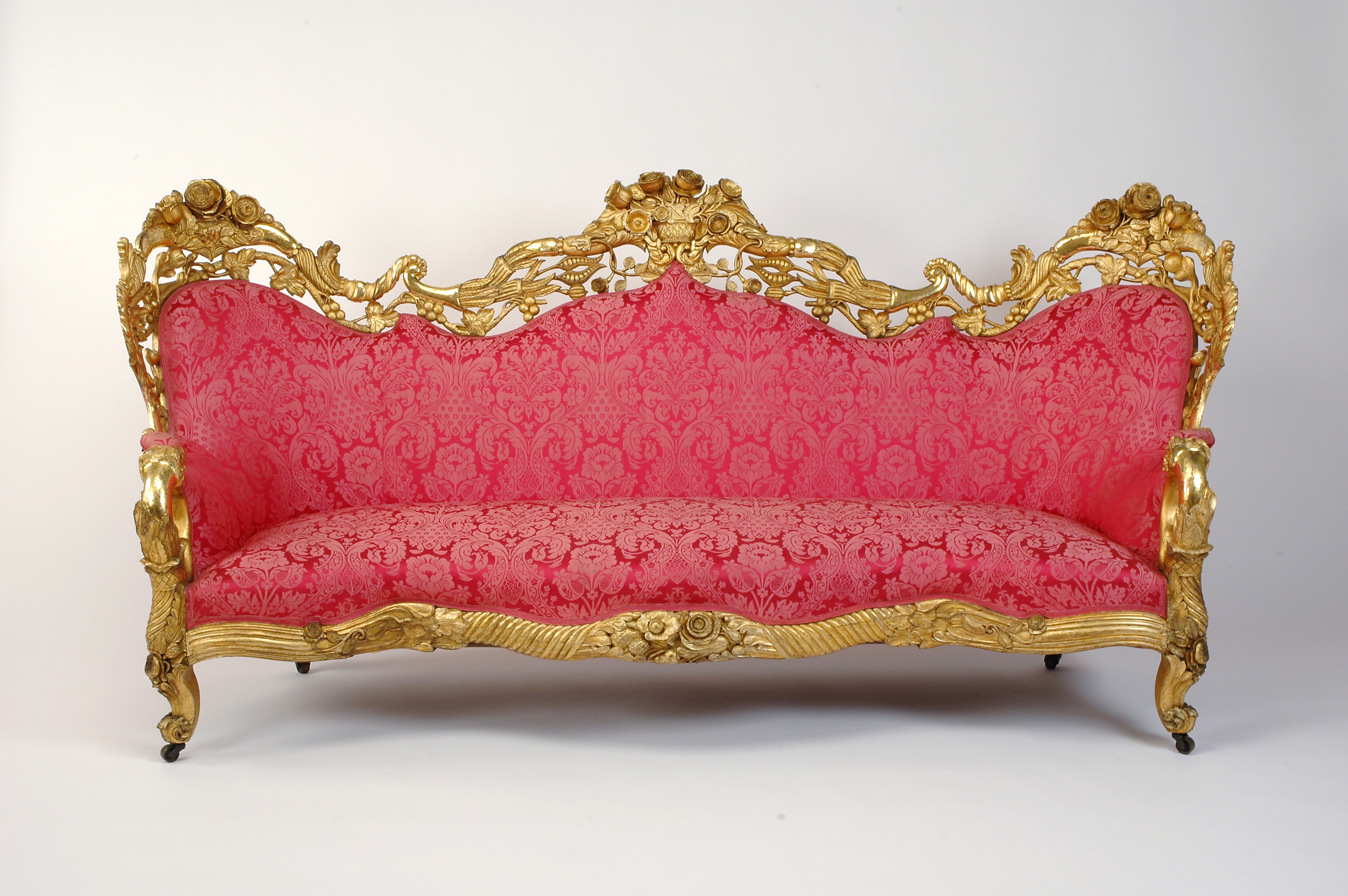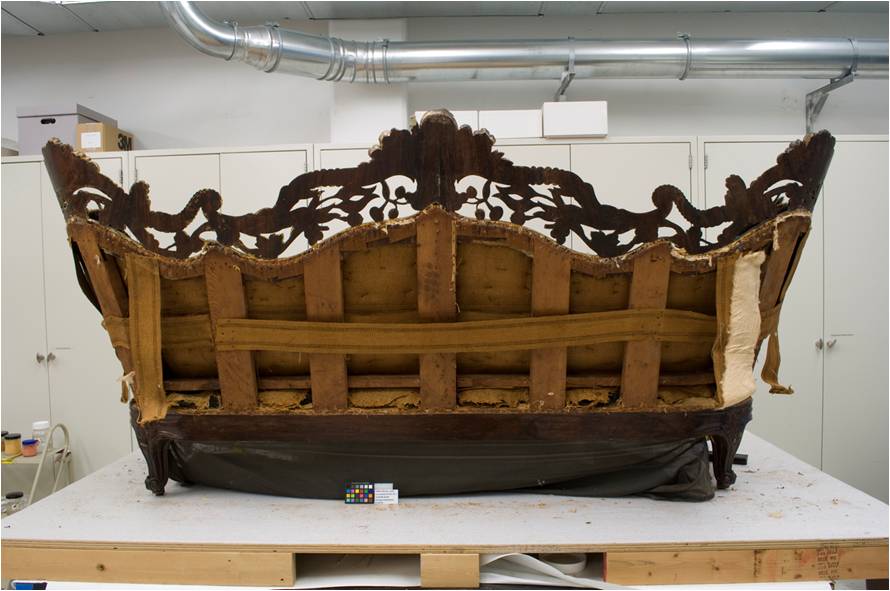The Belter sofas have been part of the VMFA collection since 1954. Initially, it was thought that these were unique objects among Belter pieces, as no other known works were gilded, so they had minimal work done on them, including the 23 karat gold leaf being restored and replacing the deteriorated seat coverings. But in 2005 the museum revisited the sofas. After looking at samples from both sofas under microscopes, the museum concluded that the gilding did not demonstrate the original intent of the artist. The owner of the sofas during the mid 19th century, John McLean, may have had the furniture gilded to better match the rest of his house, as was the taste of the Gilded Age. After looking at samples from both sofas under microscopes, the museum concluded that the gilding did not demonstrate the original intent of the artist.
The natural color and details of the carved rosewood, were hidden under the gilding and the museum wanted to be able to showcase those features. Luckily, the VMFA had a pair of sofas. They decided to restore one sofa to its original appearance made by Belter and remove the gilding to show the rosewood underneath. The other would keep the gilding and any changes which had occurred over the many years since their creation, but be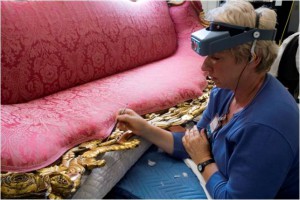 cleaned to better display the gilding.
cleaned to better display the gilding.
Removing the gilding to bring the sofa to its original state was irreversible, but since one sofa would still display all the changes the sofas had endured, curators and conservators agreed on the path of action.
The sofa that was selected to keep the gilding was the one with the “arabasket” (carvings in the pattern of scrolls, flowers, foliage, and fruit).
However, for the other sofa that was to be restored to its mid-19th century appearance, the process was longer. It wasn’t too difficult to strip the gilding using a dimetyl ester-based stripper, a solvent used to remove paint safely without causing damage to the surface it was painted on. A resin varnish was underneath the gilding and was believed to be original, so conservators were careful not to remove it as they took off the gilding. Even with careful work and execution, some of the resin varnish was inadvertently damaged while trying to remove the layers of gesso, a plaster-like glue substance, underneath the gilding. Supplements, or substitutions, were used to replace any varnish that was removed. The ungilded sofa was completed in time to be put on display in the new American galleries, which reopened in 2010.
The ungilded sofa also was also slated for reupholstery in period fabrics by Jennifer Zemanek, an upholstery specialist. During the reupholstering, she discovered a fragment of a German newspaper from 1848. This didn’t confirm that the sofa was made in 1848, but it did give the earliest time it could have been made (Belter’s methods included putting newspaper between piles of wood in his workshop!). It took much longer to complete the conservation work on this sofa than the arabasket sofa, being worked on over the course of several years.
Click Here for an Interview With Kathy Gillis!
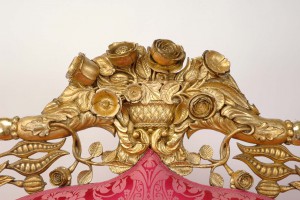
54.15.1/2 John H. Belter, One of a Pair of Sofas, ca. 1850 Photo: Katherine Wetzel © Virginia Museum of Fine Arts 10/12/2005
Both sofas were restored successfully and they alternate going on view, taking their turn in showing different eras in their history.
